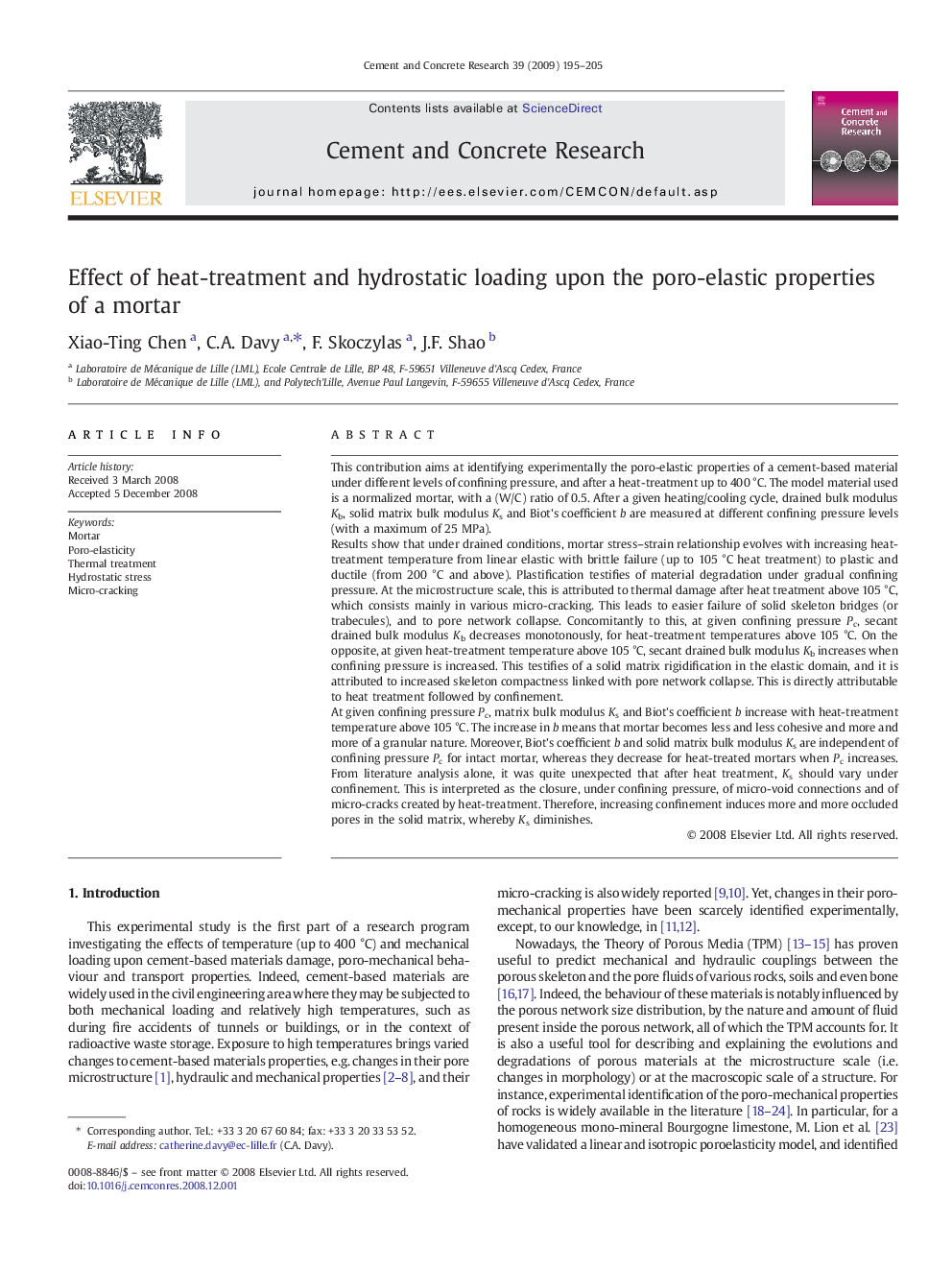| کد مقاله | کد نشریه | سال انتشار | مقاله انگلیسی | نسخه تمام متن |
|---|---|---|---|---|
| 1457461 | 989262 | 2009 | 11 صفحه PDF | دانلود رایگان |

This contribution aims at identifying experimentally the poro-elastic properties of a cement-based material under different levels of confining pressure, and after a heat-treatment up to 400 °C. The model material used is a normalized mortar, with a (W/C) ratio of 0.5. After a given heating/cooling cycle, drained bulk modulus Kb, solid matrix bulk modulus Ks and Biot's coefficient b are measured at different confining pressure levels (with a maximum of 25 MPa).Results show that under drained conditions, mortar stress–strain relationship evolves with increasing heat-treatment temperature from linear elastic with brittle failure (up to 105 °C heat treatment) to plastic and ductile (from 200 °C and above). Plastification testifies of material degradation under gradual confining pressure. At the microstructure scale, this is attributed to thermal damage after heat treatment above 105 °C, which consists mainly in various micro-cracking. This leads to easier failure of solid skeleton bridges (or trabecules), and to pore network collapse. Concomitantly to this, at given confining pressure Pc, secant drained bulk modulus Kb decreases monotonously, for heat-treatment temperatures above 105 °C. On the opposite, at given heat-treatment temperature above 105 °C, secant drained bulk modulus Kb increases when confining pressure is increased. This testifies of a solid matrix rigidification in the elastic domain, and it is attributed to increased skeleton compactness linked with pore network collapse. This is directly attributable to heat treatment followed by confinement.At given confining pressure Pc, matrix bulk modulus Ks and Biot's coefficient b increase with heat-treatment temperature above 105 °C. The increase in b means that mortar becomes less and less cohesive and more and more of a granular nature. Moreover, Biot's coefficient b and solid matrix bulk modulus Ks are independent of confining pressure Pc for intact mortar, whereas they decrease for heat-treated mortars when Pc increases. From literature analysis alone, it was quite unexpected that after heat treatment, Ks should vary under confinement. This is interpreted as the closure, under confining pressure, of micro-void connections and of micro-cracks created by heat-treatment. Therefore, increasing confinement induces more and more occluded pores in the solid matrix, whereby Ks diminishes.
Journal: Cement and Concrete Research - Volume 39, Issue 3, March 2009, Pages 195–205